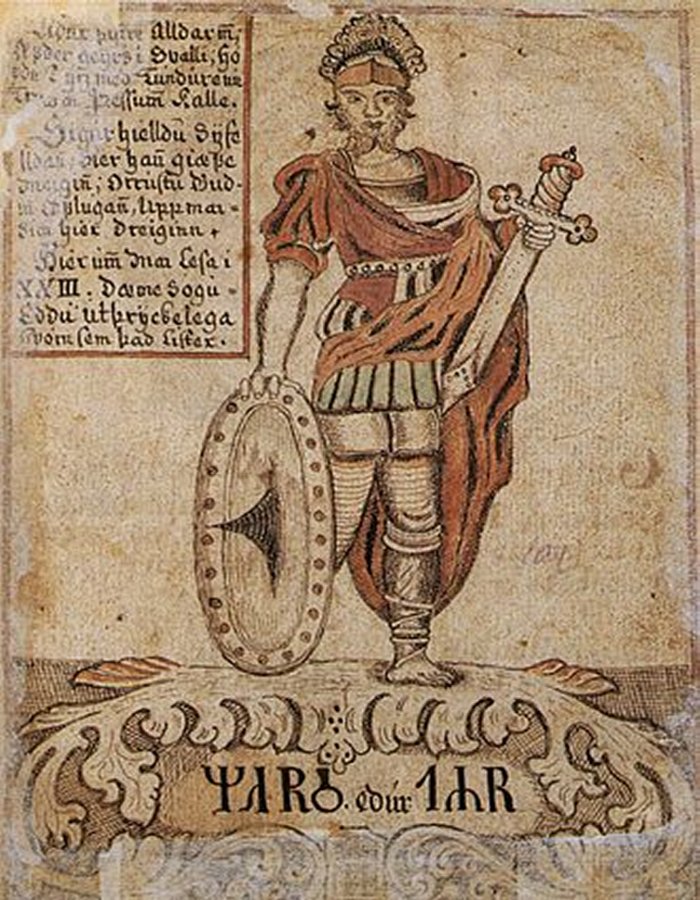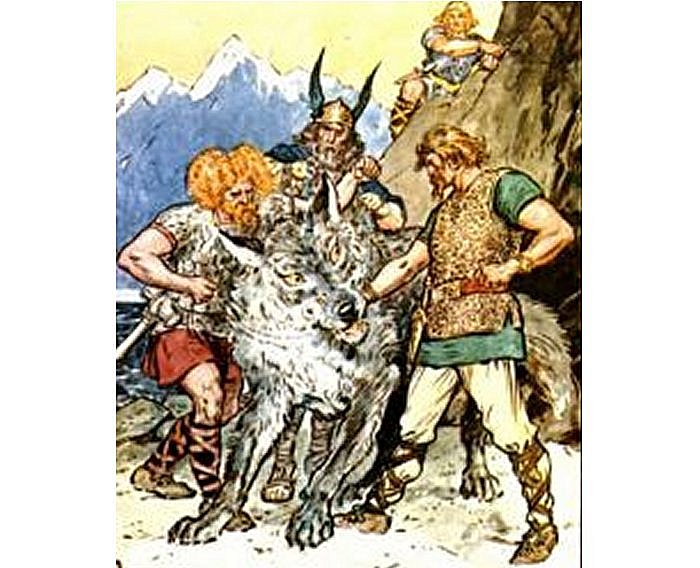Norse God Tyr Who Gave Viking Warriors Courage And Self-Confidence In Battle
A. Sutherland - AncientPages.com - At one time in the distant past, Tyr was a god of war and a sky god. He was concerned with justice and with reasonable and fair treaties.
There is a version according to which Tyr was the main god among the gods of Aesir, and he was their leader.
Týr equated with Mars in an 18th-century manuscript (ÍB 299 4to). Image uploader: Michelmfb - Public Domain
At the time, he might have been the leader of the Norse Pantheon, and his role was even more significant than Odin.
It was before Odin had become the undisputed chief of the gods. Later, his role as the chief god was significantly diminished. In some stories, he is the son of the giant Hymir, and in later Norse beliefs, when the myths were written down, Tyr was referred to as Odin's son and the patron of warriors.
He is associated with law and glory, and he embodies bravery.
Otherwise, little is known about him, and few traditions connected with him have survived.
Many researchers have unsuccessfully attributed to God Tyr different features in their assumptions. Tyr is a very complex and enigmatic figure in the Norse pantheon, and it is even uncertain whether Tyr was a forerunner of the god Odin; this combination is not mentioned in the Eddas and North mythical stories recorded by the 13th-century Icelandic poet Snorri Sturluson.
As to his bravery, this feature of the god Tyr is mentioned in the Icelandic Eddas. Tyr is considered the bravest of all the gods of Aesir because he is the only one who decides to put his hand into the jaws of the terrible wolf, Fenrir.
Image credit: Charles E Brock, 1930. Public Domain
Fenrir bit off Tyr's hand when the other gods broke their word to the beast and tied him up.
Therefore, most depictions of Tyr show him as the one-handed god.
According to the Poetic Edda and Prose Edda, the gods decided to chain the wolf Fenrir at one stage, but the beast broke every chain or rope they put upon him.
Finally, the dwarves made a magical silk ribbon called Gleipnir, but Fenrir sensed the gods' deceit and refused to be bound by it. He explained that Gleipnir was very thin, and there would be no fame for him if he tore such a delicate chain unless – one of the gods put his hand in the wolf's mouth.
No one dared to fulfill Fenrir's request except the brave Tyr. When the gods saw that Fenrir was bound, they celebrated, but Tyr did not do it.
He knew that Fenrir would remain bound until the day of Ragnarok.
Tyr has remained the most enigmatic figure in Norse mythology and is one of the important heroes of the Scandinavian epic. Both bravery and heroism are attributed to him. If a warrior carved a rune into his weapon, it became a weapon of Tyr's. It was believed that such a weapon significantly increased that warrior's chances of success in battle.
Numerous spears have been unearthed on which runic inscriptions say that these spears are "dedicated to the wise and brave Tyr."
Viking warriors used to call upon him in battle; he gave them courage and self-confidence. This god is remembered and surrounded with deep respect, and captains and princes are designated after him.
Written by – A. Sutherland AncientPages.com Staff Writer
Updated on November 23, 2023
Copyright © AncientPages.com All rights reserved. This material may not be published, broadcast, rewritten or redistributed in whole or part without the express written permission of AncientPages.com
Expand for referencesReferences:
Paul Watkins P. Thunder God
Viktor Rydberg V. Teutonic Mythology
More From Ancient Pages
-
 Huge Roman Forum Discovered In Unknown Ancient City In Spain
Archaeology | Sep 4, 2023
Huge Roman Forum Discovered In Unknown Ancient City In Spain
Archaeology | Sep 4, 2023 -
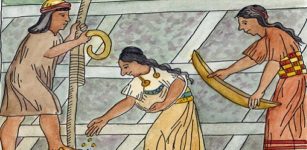 Why Was Ayllu Very Important For The Inca People?
Ancient History Facts | Feb 19, 2019
Why Was Ayllu Very Important For The Inca People?
Ancient History Facts | Feb 19, 2019 -
 Bezvodovka: Little Known Ancient Solar Observatory In Ukraine Reveals Its Secrets
Archaeoastronomy | Jan 4, 2017
Bezvodovka: Little Known Ancient Solar Observatory In Ukraine Reveals Its Secrets
Archaeoastronomy | Jan 4, 2017 -
 Mysterious Abaj Takalik Of Guatemala And Intriguing Relationship Between Olmec and Maya
Civilizations | Mar 16, 2020
Mysterious Abaj Takalik Of Guatemala And Intriguing Relationship Between Olmec and Maya
Civilizations | Mar 16, 2020 -
 Mystery Of The Tower Of Babel – The Mountain Of God Or A Symbol Of Chaos And Ignorance?
Ancient Mysteries | Oct 14, 2014
Mystery Of The Tower Of Babel – The Mountain Of God Or A Symbol Of Chaos And Ignorance?
Ancient Mysteries | Oct 14, 2014 -
 Skilled Nabataeans Celestially Aligned Petra’s Wonderful Architecture
Featured Stories | Mar 6, 2014
Skilled Nabataeans Celestially Aligned Petra’s Wonderful Architecture
Featured Stories | Mar 6, 2014 -
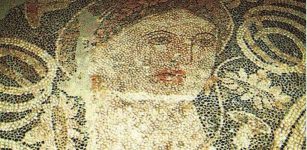 Wax Tablets Reveal Ancient Secrets of The Illyrians
Artifacts | Sep 5, 2015
Wax Tablets Reveal Ancient Secrets of The Illyrians
Artifacts | Sep 5, 2015 -
 Mystery Of The Amazing 2,500-Year-Old Underwater Rochelongue Treasure
Featured Stories | Jul 7, 2023
Mystery Of The Amazing 2,500-Year-Old Underwater Rochelongue Treasure
Featured Stories | Jul 7, 2023 -
 60-Meter Longhouse Discovered Near Viking Ship At Gjellestad, Norway
Archaeology | Dec 6, 2021
60-Meter Longhouse Discovered Near Viking Ship At Gjellestad, Norway
Archaeology | Dec 6, 2021 -
 World’s Oldest Tattoos Discovered On Egyptian Mummies Re-Write History Of Tattoos
Archaeology | Mar 2, 2018
World’s Oldest Tattoos Discovered On Egyptian Mummies Re-Write History Of Tattoos
Archaeology | Mar 2, 2018 -
 Children Of Lir And Aoife’s Curse – Celtic Legend That Inspired The Swan Lake Ballet
Myths & Legends | Feb 8, 2024
Children Of Lir And Aoife’s Curse – Celtic Legend That Inspired The Swan Lake Ballet
Myths & Legends | Feb 8, 2024 -
 Who Said ‘Eureka’ First And Why?
Ancient History Facts | Feb 8, 2023
Who Said ‘Eureka’ First And Why?
Ancient History Facts | Feb 8, 2023 -
 Ice Age Mystery – Unexplained Disappearance Of North America’s Large Mammals – New Clues
Fossils | Jun 1, 2024
Ice Age Mystery – Unexplained Disappearance Of North America’s Large Mammals – New Clues
Fossils | Jun 1, 2024 -
 Yenikapı Shipwrecks – A Unique Historical Treasure That Sheds Light On Ancient Ship Production
Archaeology | Oct 28, 2015
Yenikapı Shipwrecks – A Unique Historical Treasure That Sheds Light On Ancient Ship Production
Archaeology | Oct 28, 2015 -
 Bizarre Towering Pillars Of Externsteine: Myths, Legends And Sacred Rituals From Times Long Gone
Civilizations | Jan 7, 2017
Bizarre Towering Pillars Of Externsteine: Myths, Legends And Sacred Rituals From Times Long Gone
Civilizations | Jan 7, 2017 -
 Secrets Of 2,000-Year-Old Tomb Of Cerberus Revealed To The Public
Archaeology | Jul 29, 2024
Secrets Of 2,000-Year-Old Tomb Of Cerberus Revealed To The Public
Archaeology | Jul 29, 2024 -
 Discovery Of World’s Oldest Fortresses Reshapes Our Understanding Of Hunter–Gatherers
Archaeology | Dec 7, 2023
Discovery Of World’s Oldest Fortresses Reshapes Our Understanding Of Hunter–Gatherers
Archaeology | Dec 7, 2023 -
 On This Day In History: Battle Of Vincennes, Indiana – On Feb 24-25, 1779
News | Feb 24, 2017
On This Day In History: Battle Of Vincennes, Indiana – On Feb 24-25, 1779
News | Feb 24, 2017 -
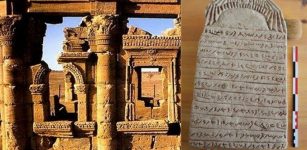 Ancient Napata And Meroe Kingdoms Reveal Secrets Of Queen Tiye And Goddess Maat
Archaeology | Mar 7, 2018
Ancient Napata And Meroe Kingdoms Reveal Secrets Of Queen Tiye And Goddess Maat
Archaeology | Mar 7, 2018 -
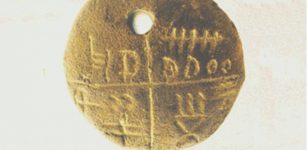 Controversial Tartaria Tablets: The First Writing System In The World?
Artifacts | Nov 13, 2014
Controversial Tartaria Tablets: The First Writing System In The World?
Artifacts | Nov 13, 2014

